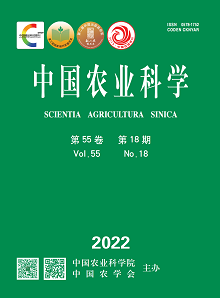【Objective】The objective of this study was to estimate the resource diversity of Chinese ornamental herbaceous peonies and to analyze the characteristics of being cut peonies, so as to provide a theoretical basis for germplasm utilization and innovation.【Method】Phenotypic characteristics data of 346 herbaceous peonies from four cultivation areas were collected. Then, according to the whole sample and the samples from different cultivation areas, the frequency distribution, coefficient of variation and diversity index were calculated. Additionally, the varieties were analyzed by clustering.【Result】The cultivars of Chinese ornamental herbaceous peonies were rich in the diversity of many characteristics, with diversity indices of binary, ordered and disordered multistate characteristics of 0.29-1.90 as well as numerical characteristics of 1.90-2.08. In binary, ordered and disordered multistate characteristics, flower color and flower type showed the highest diversity index, i.e., 1.90 and 1.88, respectively, followed by flower bud color (1.46) and degree of stamen petalization (1.42). In numerical characteristics, plant height and stem length had the highest diversity index, i.e., 2.08 and 2.07, respectively, followed by bud diameter (2.04), flower diameter (2.04) and flower height (2.01), and only the diversity indices of stem diameter (1.99) and pedicel length (1.90) were less than 2. Furthermore, the plant height was distributed in the range of 38.50-100.50 cm, stem length was 43.19-120.00 cm, and both were normally distributed. However, bud diameter, flower height, flower diameter, stem diameter and pedicel length showed skewed distributions. Among them, the bud diameter was 1.22-3.99 cm, showing a negatively skewed distribution. The flower diameter was distributed in the range of 3.11-19.50 cm, and the variation coefficient was only 15.65%, ranking it last among the numerical characteristics. The flower height (1.73-14.30 cm) was negatively distributed, with a variation coefficient of 32.55%, ranking it first among the numerical characteristics. Stem diameter (0.18-0.59 cm) and pedicel length (5.57-40.00 cm) were positively skewed. The nine groups were divided by clustering, and the most of the clustering groups included varieties from two to four cultivation areas. Moreover, there were no significant differences in bud diameter, flower diameter, stem diameter or pedicel length among the clustering groups. The plant height, stem length, flower height and degree of stamen petalization were different. Among the samples, 71.39% of the varieties had round flower buds and were nonchapped, which were presently popular in the Chinese market. Many varieties were the double flower type, but the hydrangea type preferred by the market accounted for only 4.9%. Meanwhile, 79.8% of the varieties had no obvious flower fragrance, 71.7% of the varieties had side buds, and 62.7% of the varieties bloomed during the middle flowering period, lacking early- or late-flowering varieties. There were no significant differences in plant height or stem length among the various cultivation areas, while the stem diameters of cultivars from Lintao and Heze were significantly larger than those from Yangzhou and Luoyang. The bud diameter and flower diameter of cultivars from Heze were also significantly larger.【Conclusion】A relatively high diversity of Chinese cultivated ornamental herbaceous peonies was observed, and as a kind of multifunctional plant, the diversity was worth preserving. However, the cultivars were insufficient as cut peonies, lacking cultivars with straight stems, fragrance, single buds and diverse flowering periods. The varieties from Lintao and Heze had some advantages in stem, bud and flower diameters for cut flowers. Cut peony selection and breeding in China was inadequate. Innovative germplasms need to be developed. It is urgent to introduce germplasms with the characteristics of long stems, single flower on one stem, fragrant flowers and late flowering periods for breeding.









